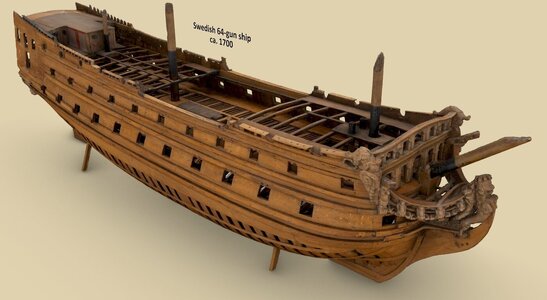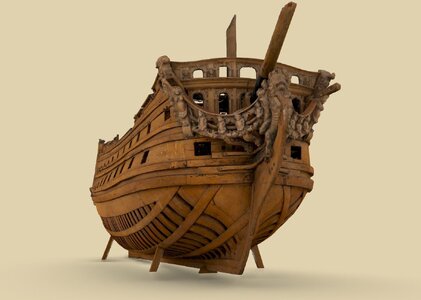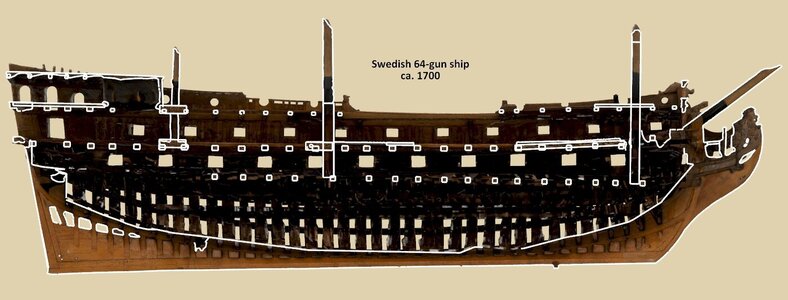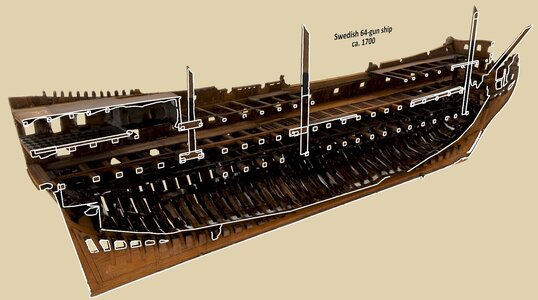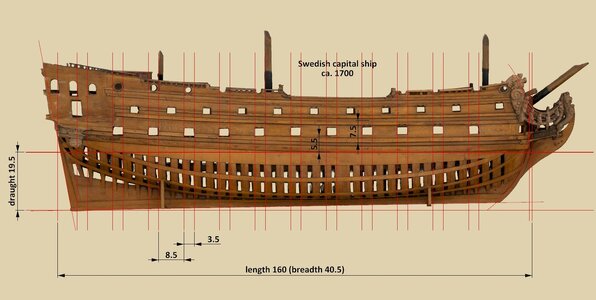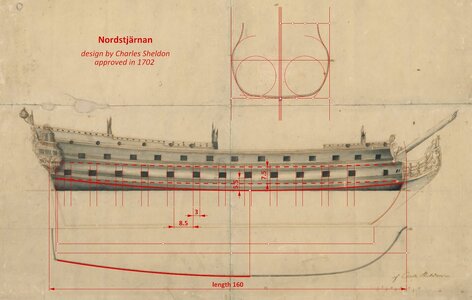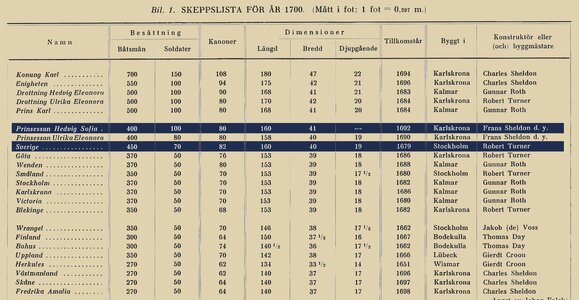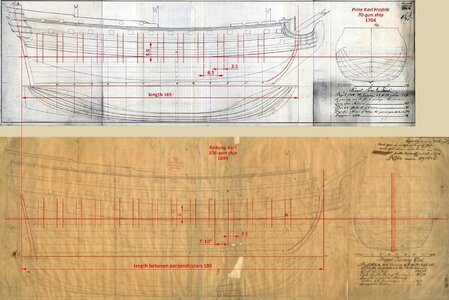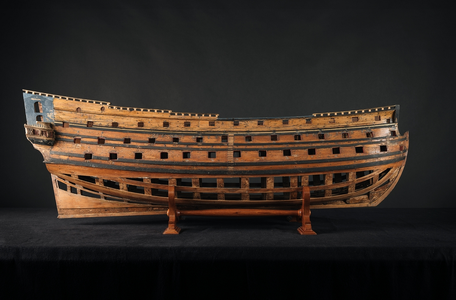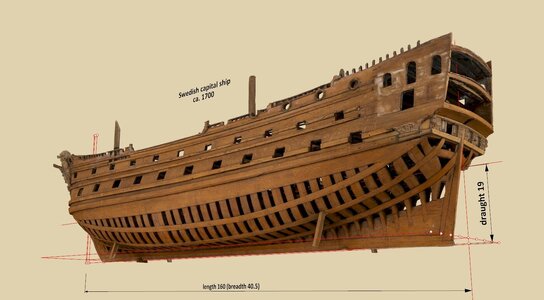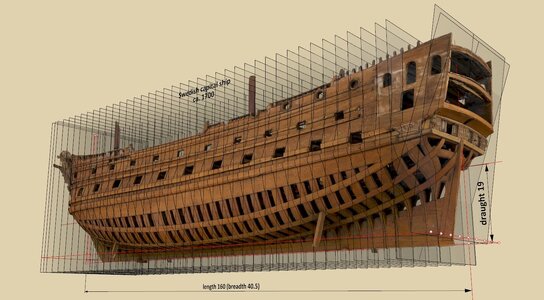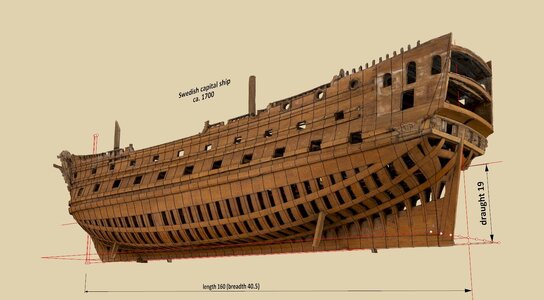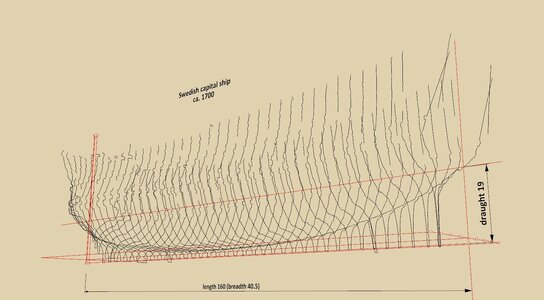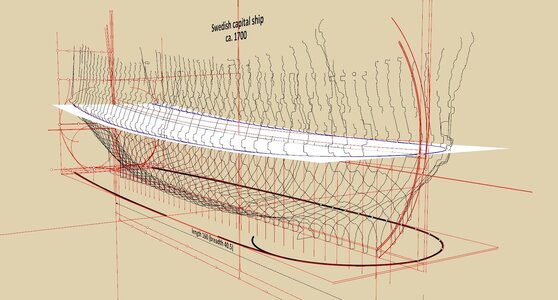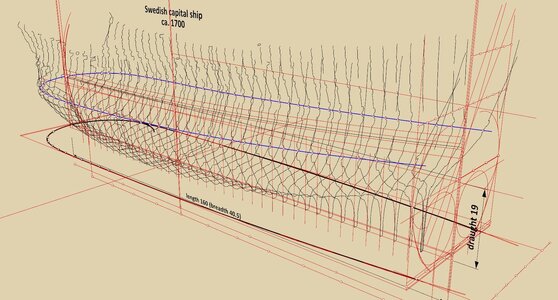.
The ship, embodied in a reduced scale as model Ö 6, was designed using an identical conceptual method to the English ship
Berwick 1679. It appears to be an unknown method today, that is, at least, not described in modern studies.
It differs from the classic English method, which is widely known and described today, in that here an otherwise simple way of obtaining futtock sweeps of variable radii (as opposed to futtock sweeps of fixed radii) has been found and applied, to the benefit of the harmoniousness of the hull shape, but at the cost of a somewhat more difficult application, as requiring greater proficiency and precision in tracing the lines.
The diagrams below show the essence of this method using example of the body plan of the English capital ship
Berwick 1679, reproduced in
Deane's Doctrine of Naval architecture, 1670 by Brian Lavery.
In short, each individual bend is framed by its own rectangle, with the width of the corresponding half-breadth and the height of the corresponding distance between the line of the floor and the line of the breadth. In the first step, floor sweeps, breadth sweeps and the diagonal line were drawn (see diagram). In the next step, the futtock sweeps were drawn tangentially to both of the previous sweeps in such a way that they passed through the intersection of the floor sweep and the diagonal line. That's it, except that, naturally, hollowing/bottom curves still had to be added at the very end of the process, connecting the hull body proper to the keel assembly.
It may be further clarified here that in both of these designs, that is, of both
Berwick 1679 and Ö 6 model, the variable radius was used typically for (lower) breadth sweeps, while the fixed radius was used for floor sweeps. The latter feature becomes increasingly common in this period, almost completely displacing floor sweeps sporting variable radii, which would return only a few decades later in English design practice (see commentary on this by Mungo Murray in
A Treatise on Ship-Building and Navigation, 1754, as well as quite a number of 17th century and later 18th century designs, the latter notably by John Williams.
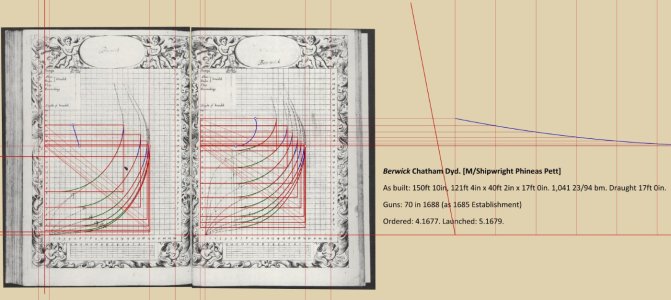
Close up:
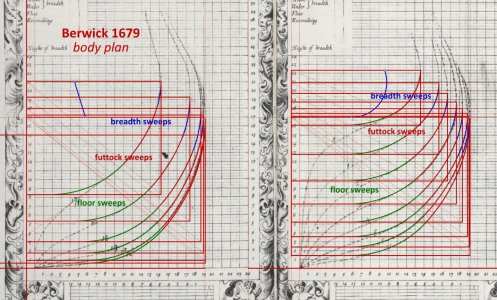
The conceptual essence of the Ö 6 model has thus been found and presented, but I am no longer sure that I will be able to bring this extremely complicated and arduous process of analysing the whole geometrical construction of the Ö 6 model to a conclusion, when my main reward for the presentations is repeated onslaughts from authors of publications, apparently orthodox and even, one might say, increasingly anachronistic in these matters.
.


